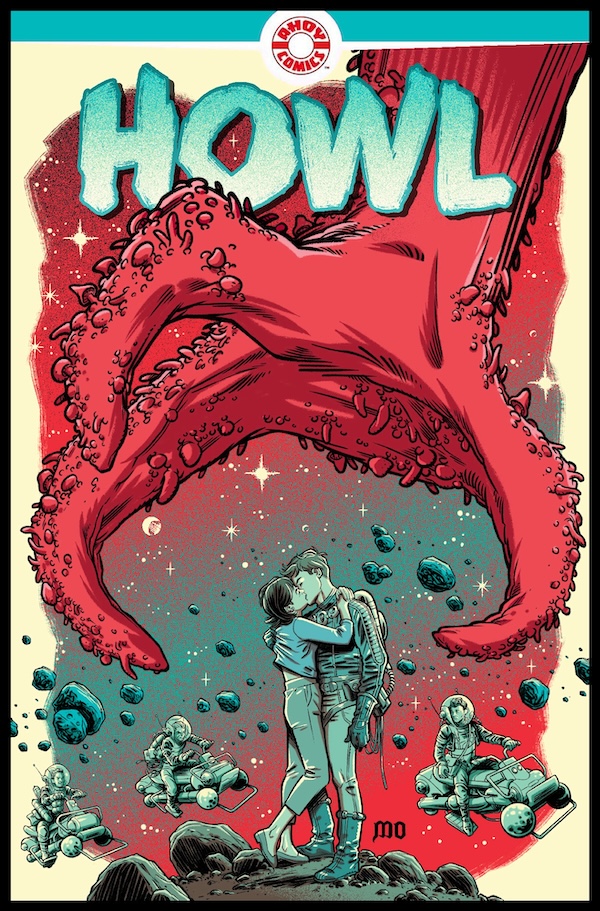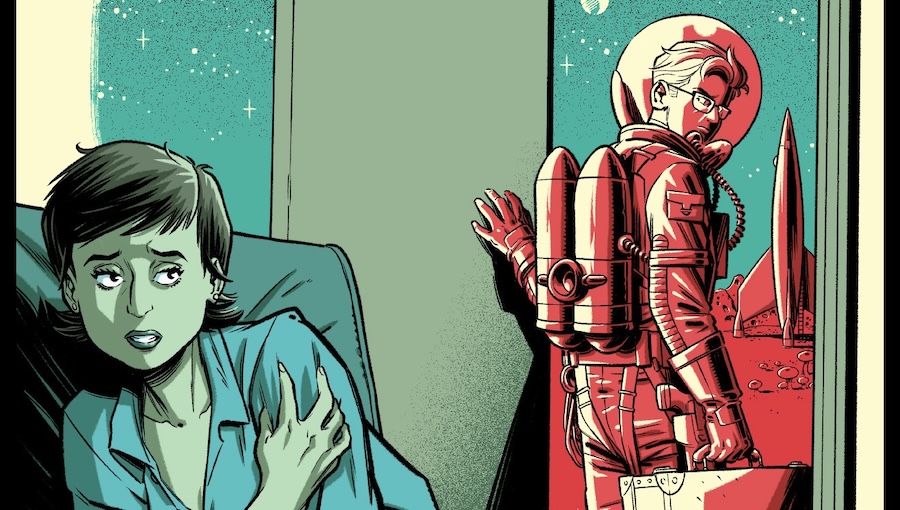The following is an interview with writer Alisa Kwitney (The Sandman Presents, G.I.L.T.) regarding the upcoming release of the sci-fi comic book series, Howl, through AHOY Comics. In this interview, Fanbase Press Editor-in-Chief Barbra Dillon chats with Kwitney about her shared creative process in working with artist Mauricet to bring the story and characters to life on the page, how the story may connect with today’s audiences, and more!
Barbra Dillon, Fanbase Press Editor-in-Chief: Congratulations on the upcoming release of Howl! For those who may be unfamiliar, what can you share with us about the series’ premise?
Alisa Kwitney: My elevator pitch was “Mrs. Maisel meets Invasion of the Body Snatchers,” but the project began as a way of exploring Greenwich Village in the late fifties, when Beat subculture (think berets, goatees, long hair, and spoken-verse poetry) was about to break out into the wider world.
I had always wanted to know more about that time, when my parents were young and broke and living on Perry Street. They really were part of the Beat scene — my dad played Flamenco and folk and my mom wore black leotards and wrote letters so intelligent they seemed like essays. My mom read my dad’s science fiction short story, “Warm,” when she was in high school, and they met when she was attending NYU. They both hung out at the Hydra Club with other science fiction writers. They were also living together out of wedlock. My parents split when I was very young, and I don’t have many memories of them as a couple or of us as a family, but I got to know my father through his science fiction short stories, which were absurdist and dark and extremely cynical about relationships.
So in a sense, Howl is my version of the classic Delmore Schwartz story, “In Dreams Begin Responsibilities,” which has the narrator viewing his parents’ courtship as if it were an old black-and-white silent film. Except in my case, it is a sci-fi B-movie from the late fifties.
BD: What can you tell us about your shared creative process in working with artist Mauricet to bring the bohemian sci-fi story and characters to life on the page?
AK: Mauricet and I have an ongoing conversation, especially at the beginning of projects and at critical phases of the plot. I don’t just hand him a script and reference — we go back and forth, discussing movies and comics and books and paintings that resonate with us on a particular project. I never think that Mauricet is just illustrating my story. I think of us as co-creators, inventing a world that may have started out in my head but is only realized when it passes through his.

BD: Howl challenges the sense of conformity that many might picture when they think of media from the 1950s. As we find ourselves in such challenging cultural and political times, how do you feel that Howl might help today’s readers to process their frustrations and creative voices?
AK: Oy, that’s a big question. Maybe Howl will inspire readers to ask, “What would a person infected by a parasitic alien fungus do?” Then, they would not do that thing, or better yet, do the opposite. The truth is, whenever anyone writes about the past or the future, they are really writing about the present. 1950s science fiction was obsessed with the dangers of communism, conformity, and radiation. 1970s science fiction focused more on the threat of brainwashing and mind control — the 1978 version of Invasion of the Body Snatchers came out a month or so after the notorious Jonestown massacre, in which followers of Jim Jones poisoned their loved ones and themselves. But the tropes of “pod people” stories or “aliens among us” tales always carry the same underlying idea: It is good to remain an idiosyncratic individual. Value human connections. Do not blindly follow any leader or cause, even the leaders or causes you admire most. Especially those.
BD: What makes AHOY Comics the perfect home for this series?
AK: Tom Peyer both embraced the B-movie body horror aspect of this series, and the autobiographical and emotional underbelly of the story. He actively encouraged me to talk about the personal dimension of the story, as well as the fun horror aspects. That, in a pod shell, is why I so love working with him and AHOY Comics.
BD: As with all of AHOY Comics’ releases, there are sure to be lots of incredible “extras” included with the issue. Can you give us a preview of what readers can anticipate with the first issue’s release?
AK: There are pulpish prose delights from Kirk Vanderbeek and Bryce Ingman, and splashy art from Garth Ennis’ barbarian Babs, Toxic Avenger, and Archaic.
BD: Are there any other projects – past or current – that you would like to highlight for our readers?
AK: My DC Comics graphic novel, Mystik U, will be released this March in a new YA format, and of course, folks who enjoy Howl should definitely check out my previous collab with Mauricet, Gilt.
BD: Lastly, what would you like to tell fans who want to learn more about Howl?
AK: You can always check out my website, which I am going to attempt to keep updated and free of mothballs. I will also endeavor to be more active on the various social media, (but if I fail, feel free to berate me):
www.alisakwitney.com
Twitter: @akwitney
Bluesky: @alisakwitney@bsky.social
FB: www.facebook.com/alisa.kwitney.sheckley/
Instagram: k.witty

